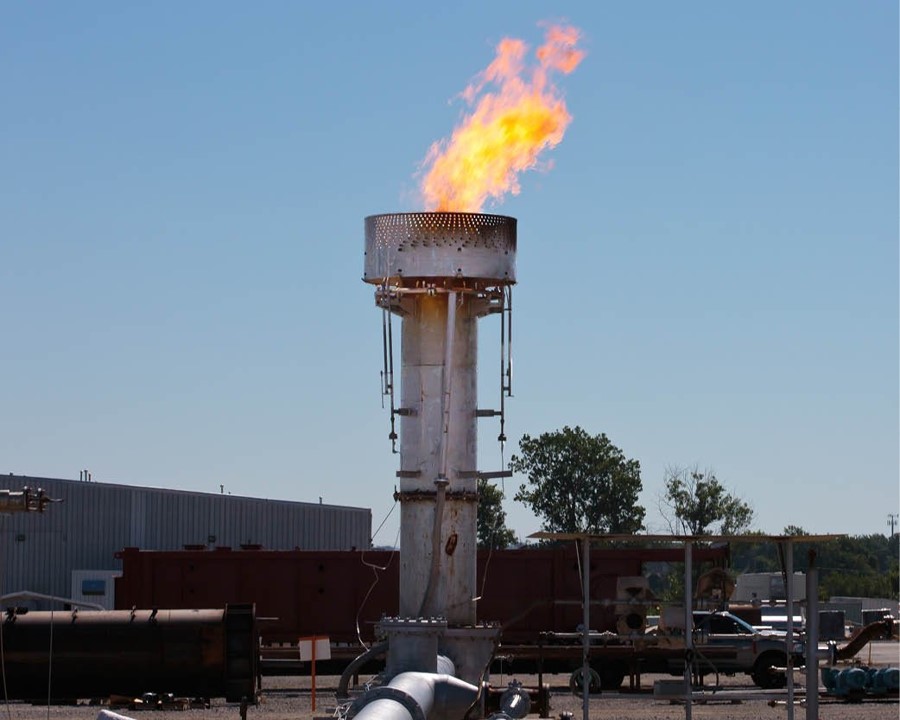
Summary
Air-assisted flare design utilizes forced air injection into the combustion zoneThe area of the flare flame where the gas and vapours found just after a flare tip combine for combustion. Elevated Flare definitions and calculation methods from 40 CFR 63… Learn more… which provides smokeless flaring while maintaining the desired combustion efficiency.
How it works

Advantages
Produce less noise than the steam-assisted flares.
Best option for harsh conditions such as desert environment where water is scarce.
Provides smokeless flaring with 98% destruction efficiency provided that the amount of air is monitored and controlled to maintain the desired combustion efficiency.
Limitations
If too much air is applied by operating the combustion air blowers at higher flow than required could result in a low-pressure zone at the tip which tends to pull air into the tip causing burn back and damage the flare tip.
Case study
Awaiting copyright approval
Maintaining effective cobustion efficiency and destruction efficiency are key to minimising methane from flaring. This can be achieved through improving the mixing of flare gas and air to enable complete combustion and/or by only lighting the flare when required using ignition and pilot-light systems that avoid the risk of venting.